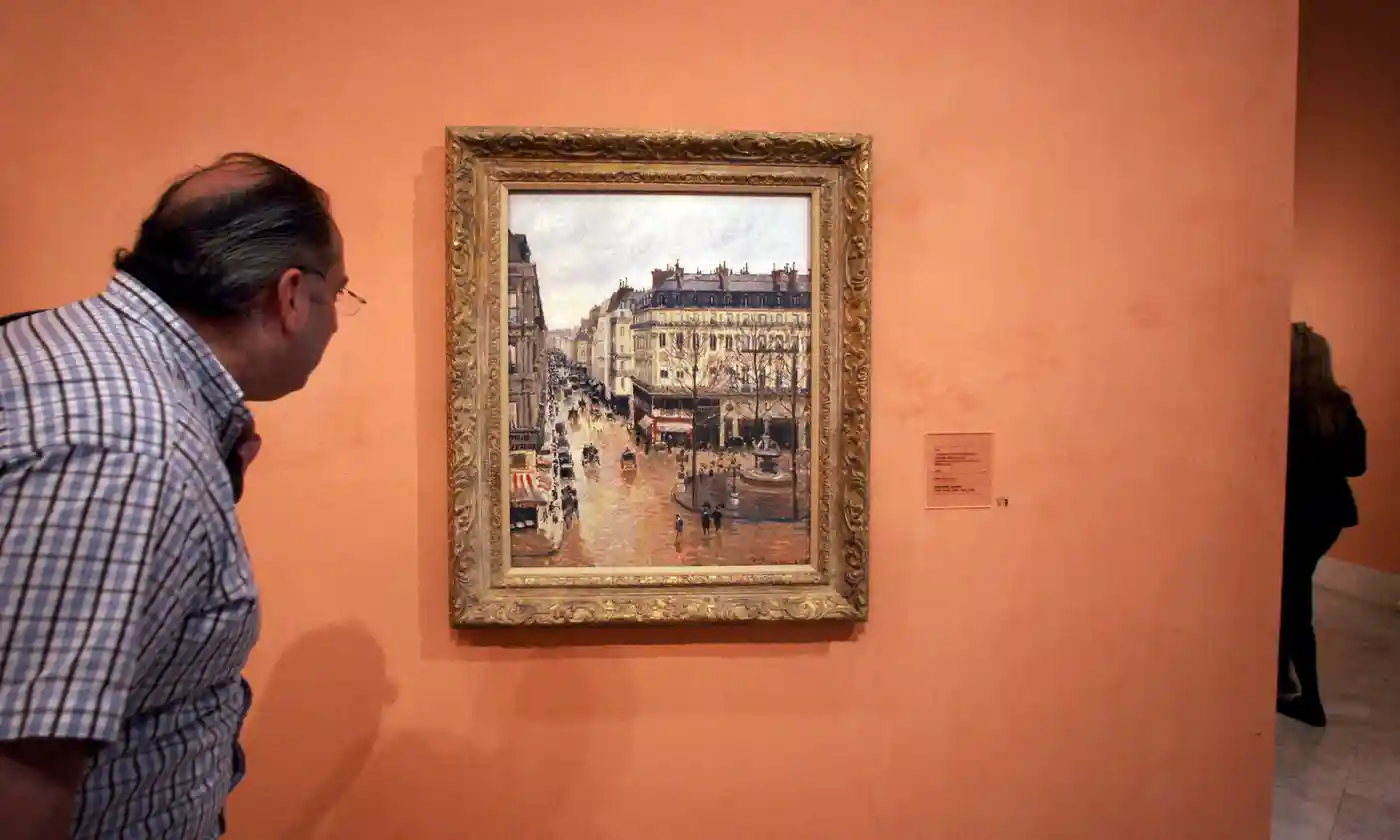News:
Fate of Nazi-looted Pissarro to be decided by US supreme court
By Ashifa Kassam in Madrid

Rue Saint-Honoré in the Afternoon, Effect of Rain by Camille Pissarro, on display in the Thyssen-Bornemisza museum in Madrid, Spain.
Depicting a rainswept Paris street, the Nazi-looted painting has long hung on the walls of one of Madrid’s top art museums. Its fate is now in the hands of the highest court in the US, in a case that has long pitted the Spanish institution against the heirs of Jewish refugees.
At the centre of the US supreme court hearing, set to begin on Tuesday, is an 1897 painting by impressionist Camille Pissarro. For decades the piece – titled Rue Saint-Honoré in the Afternoon, Effect of Rain – graced the walls of the Cassirer family homes in Berlin and Munich after it was bought directly from Pissarro’s art dealer.
In 1939, as escalating Nazi oppression made it clear the prominent Jewish family would have to leave Germany or risk death, Lilly Cassirer Neubauer scrambled to find a way to leave. She was told that exit visas could be obtained, but at a cost: the family would have to hand over its prized Pissarro painting.
A Nazi-appointed appraiser offered a paltry $360, paid into a blocked account that the family was unable to access.
Cassirer later spent years searching for the oil on canvas work, according to her heirs. After concluding it had been lost or destroyed, she accepted $13,000 in reparations from the German government in 1958 but did not waive her right to seek the painting’s return.
“Further harm and offence is caused to the Jewish population in Spain when a government-funded institution publicly displays and claims rightful ownership over an artistic work looted by the Nazis during the Holocaust,” the Jewish Community of Madrid and the Federation of Jewish Communities in Spain said in their submission.
Bernardo Cremades Román, one of the attorneys representing the organisations, contrasted Spain’s quiet, steadfast refusal to return the painting with the country’s high-profile effort to ease the path of citizenship for the descendants of Jews expelled from Spain in the late 15th century. “I think Spain is trying to put a good face out there.”
Reluctance to heed the claim also clashes with Spain’s status as a signatory on the Washington principles, a 1998 agreement pledging to return artwork confiscated by the Nazis to its rightful owners or provide restitution, he noted.
“It’s the right thing to do,” said Cremades Román. “If you see someone that’s been stripped of his or her property illegally, the right thing to do is to return that property. Regardless of whether it’s of Jewish nature or not.”
https://www.theguardian.com/artanddesign/2022/jan/17/nazi-looted-pissarro-us-supreme-court


